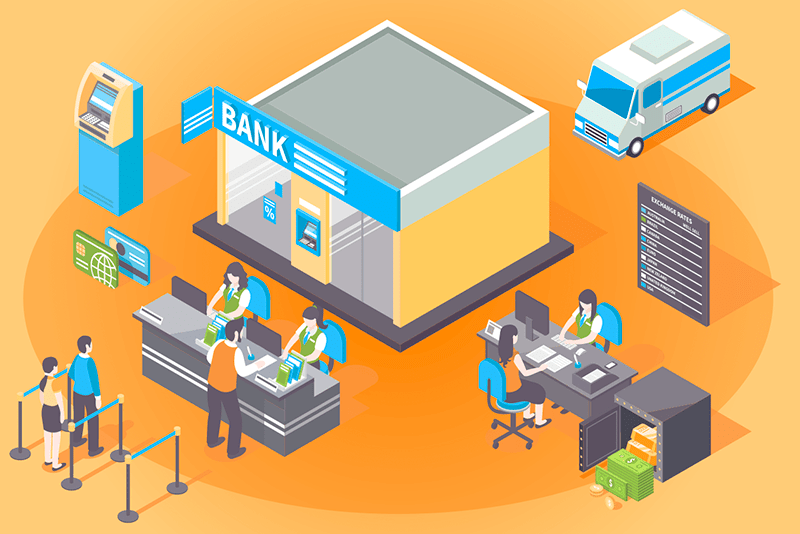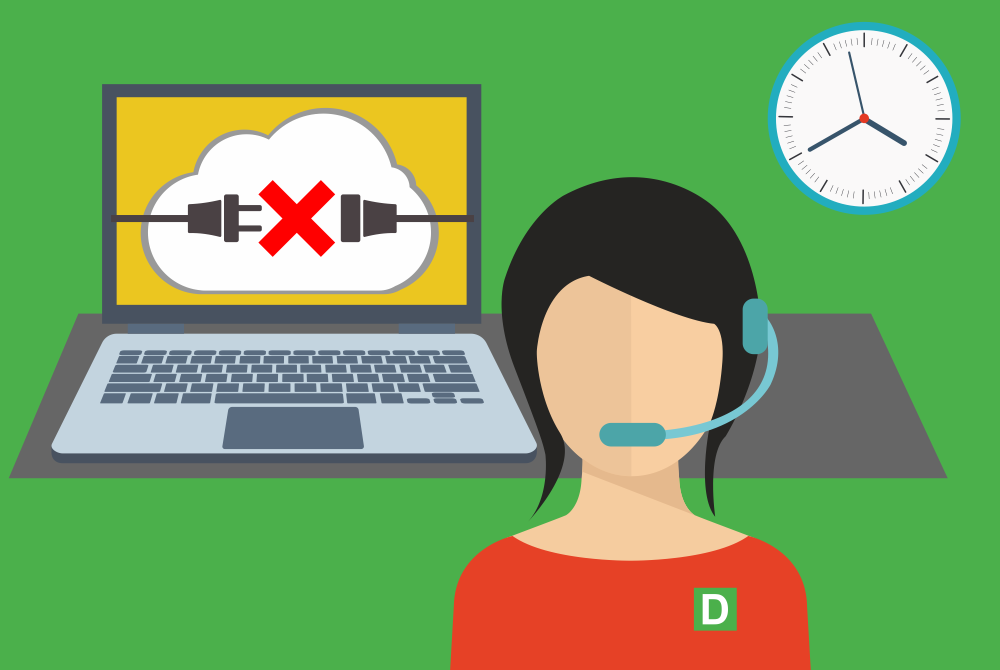
Banks and other financial institutions are often large, complex organizations. For internal communicators, there can be a lot of challenges thrown up by the very nature of these organizations.
Internal communication is essential because it helps to ensure everyone in an organization is kept informed about critical corporate initiatives, directives, procedures and policies and reduces the risk of errors. Sharing knowledge helps to break down internal information silos and boost engagement and morale. Companies with good internal communications are more productive and profitable.
Unfortunately, this isn’t always the case when it comes to internal communication in the finance sector.
An Institute of Internal Communication study found that 60% of financial institutions don’t have an internal communication strategy in place. The study also found that almost three quarters of financial institution employees didn’t really understand the company’s short-term business plans, and more than half of respondents said they felt that staff didn’t have a good grasp of the company’s values.
Download 15 most popular internal communication messages for any industry

The importance of good internal communication in banking
Employees in banks and other financial organizations can be spread in many locations in different cities, states, time zones and even countries. Employees have extremely diverse roles: some are customer facing at the “coal face” in branches, while others are more administrative in offices. There can even be mobile workforce employees in the mix with many banks offering services where mobile lenders visit potential loan customers at their own home or office.
The importance of communication in banking can’t be stated enough.
This sector, like many others, also needs to be responsive and keep up with customer demands in a world where customers expect services to be available 24 hours a day, 7 days a week thanks to technology. For this reason, traditional communications methods such as paper-based communications and emails aren’t necessarily going to be enough to cut it and keep everyone in a large, complex organization informed instantly, when they need to be.
Ways to improve internal communications in banking
An internal communications software tool, such as DeskAlerts, is a great solution to improve internal communications within a bank or financial services business. The system works by sending notification messages straight to computer screens in a way that cannot be skipped or ignored. Employees will receive messages regardless of where they are located, what software they are using at the time and even if screens are locked, on standby or in screensaver mode.
Additional features such as scrolling ticker tape, corporate wallpapers, corporate screensavers, surveys and quizzes and RSVP functions can also be included in your DeskAlerts system to further enhance your internal communications campaigns.
Messages can be sent quickly and easily using pre-made templates that can even match your corporate branding. You can notify the bank’s entire workforce about important news within minutes. Or you can send messages to certain groups of employees only, for example only employees who work in bank branches, only employees in a particular city, or only employees who have a particular role such as mortgage lending.
Some of the key ways to use DeskAlerts for communication in a bank, maximizing the use of its features include:
1. Improving employee engagement
Financial institutions like banks have many employees in widely differing roles. Many of them have face-to-face contact with customers in a very busy environment. Over time there is great change within these organizations, including corporate culture and policies. Good internal communications practices are key to boosting levels of employee engagement: it means that staff are kept in the loop about the bank or financial institution’s goals, especially when dealing with customers.
Messages sent by email don’t always get read, which means important information can be missed altogether. When employees are uninformed, their levels of engagement decrease.

Useful tools: Desktop ticker
Financial companies using DeskAlerts report to us that they use the desktop ticker function to quickly send highly visible information that appears as scrolling text across the bottom of employees’ screens. They are used to send time-critical announcements that employees need to see, for example reminders about upcoming deadlines, scheduled computer maintenance or upcoming corporate events and launches. The ticker can include links to further information if you have a lot more to say, meaning it isn’t too intrusive on computer screens and perfect for this type of communication in banking.


Useful tools: Screensavers and Wallpapers
Screensavers and wallpapers are a more passive way to communicate and rely on visual imagery displayed in high repetition to reinforce messaging such as key messages from current internal communications campaigns, company vision and mission statements, values and goals, reminders about security, and so on.
Instantly reach employees via desktop alerts that can be sent to computer screens, mobile devices or to any digital screens in the organization.
For example your HR team can use the communication system to advertise job vacancies in the banking organization, letting employees know about career advancement opportunities.
2. Informing about IT issues
Banking and financial institutions rely on robust IT systems to function in the modern world. It is essential for ongoing customer trust that these systems keep their personal information and money safe, and that their funds are available to them whenever they need to access them.
So when there is an IT-related incident, employees with customer-facing roles need to be kept informed, and quickly, so they can respond to any customer concerns and reassure them.
Traditional methods such as emails aren’t an efficient way of sharing this information quickly. And for multinational companies, time delays can occur when information needs to be translated to multiple languages before being issued.

Useful tools: Desktop ticker
The desktop ticker is a good way to push information about critical IT incidents to employees across the bottom of their screens. These messages are often the first time employees are notified about any ongoing IT incident that could affect customers. Status updates and ongoing reminders can also be sent this way. To save your time, prepare IT outage notification templates in advance.

Useful tools: Panic Button
For a major incident, panic button messages can be sent – these are a more intrusive way of communicating and are not able to be missed when they appear on screens. They can be set to display on top of all other applications. This tool displays as a pop-up on screens and is a good way of communicating when there is an emergency or other situation where you have to communicate important information quickly.

3. Survey employees to improve satisfaction
Improving employee satisfaction helps to boost productivity and business outcomes. But tracking levels of employee satisfaction can be challenging in many organizations.
Financial companies are successful because they have a strong reputation for innovation, service and good corporate cultures. To maintain this, staff need to feel engaged and valued.
Regularly asking staff a range of questions about how they feel about aspects of working for the organization can give you an idea of any problem areas that need to be addressed, such as communication with managers, opportunities for career advancement, or workplace culture. Regular surveys can help you determine if there is a change over time.

Useful tools: Surveys
When you send a survey with other methods, such as an email, it can be challenging to get everyone to open it and respond. With the DeskAlerts survey tool, the questions are sent straight to their screens and can’t be missed. You can even see the results in real-time.
4. Overcome email overload
In businesses all over the world, a large volume of emails are sent and received every day – and financial companies are no exception. The number of messages can be so great that people don’t have time to open all of them and can miss important information.
Another factor in banking and finance is that employees are often using special programs and interfaces and aren’t always looking at their inboxes as it requires switching windows, so don’t immediately receive email communications.
For communications, it can be hard to determine if these emails have been opened or seen and therefore whether staff are up-to-date with the important and critical information necessary to properly perform their jobs.

Useful tools: Desktop Alerts
Desktop alerts help to overcome the challenges of email overload by appearing straight on an employee’s screen. And you can also find out who has seen your messages using the statistics module.

Useful tools: Screensavers
Screensavers are also good for communicating less time-sensitive information and can decrease the number of daily emails sent.
5. Communicating rules and policies
The banking and finance sector in most countries is subject to regulatory change quite frequently and it’s important for employees to understand these changes and how it affects customers, and what their individual responsibilities are in implementing change.
Similarly, internal policies and procedures change from time-to-time and without good internal communications, mistakes can be made.




Useful tools: Tickers, Alerts, Screensavers, Wallpapers
DeskAlerts will allow you to send information using tickers, alerts, screensavers and wallpapers reminding employees about changes. This fact alone highlights the importance of communication in banking: if there are failures to comply with regulatory requirements, there can be significant penalties for the bank.
Similarly, internal policies and procedures change from time to time, and without good internal communications in banking, mistakes can be made.
6. Emergency communications
There are other situations that require urgent communication in a bank. When an emergency situation develops, such as a fire, an earthquake or an active shooter, DeskAlerts will enable you to quickly communicate with the affected part of your workforce so they can take the appropriate steps to be safe.

Useful tools: One-Click Alert
Emergency alert notifications can include instructions to follow – such as to evacuate or shelter in place – and even contain maps or other graphics.
7. Consistent employee training and onboarding
Whether you have new recruits joining your organization or you need to ensure that your existing ones are well-versed in your policies and procedures, having consistent training material that is distributed to everyone will ensure that your employees are all on the same page and have received the same learning process. Sometimes new recruits are onboarded in a way that is inconsistent and left to individual managers meaning their experiences will vary wildly. Other times managers can inconsistently show employees the steps they need to take to complete certain tasks.



Useful tools: Surveys, polls and quizzes module
This tool will allow you to quiz your employees, in real time, on any corporate device so that you can get instant feedback and determine how successful your training material was, or if you need to make adjustments. It also lets you test employees’ knowledge so you can determine whether they need further or refresher training on certain topics.
***
With a range of capabilities such as multi-channel messaging, targeting, the ability to schedule and time messages in advance and a 100% read rate, business communication for financial services organizations can be improved from the very first day of using DeskAlerts.
FAQ
What is internal communication in banking?
Internal communication in banking refers to the way that management in financial institutions shares information with employees, and vice versa. It can also be used to describe communication between different work teams or peer-to-peer communication.
Why communication is important in banking sector?
The banking sector is complex and carries a great deal of risk in terms of keeping data and finances secure. There are also many regulatory requirements that affect this sector. It’s important that employees in banking understand the operating context of the bank and what their role is in contributing towards the bank’s goals and responsibilities, and good bank communications facilitate this.
How can bank improve internal communication?
Banks can improve internal communication by examining their current processes and looking at where they can make improvements. This involves creating an internal communications strategy and determining the tools, channels and frequency of messaging that will allow it to make positive changes in this space.
What methods of communication do banks use?
Common methods of bank communication include:
- Sending alerts
- Sending notifications
- Email
- Letters
- Social media
- Engagement with contact centers
- Media statements
- Website content
- Marketing materials
 Caroline Duncan
Caroline Duncan



















